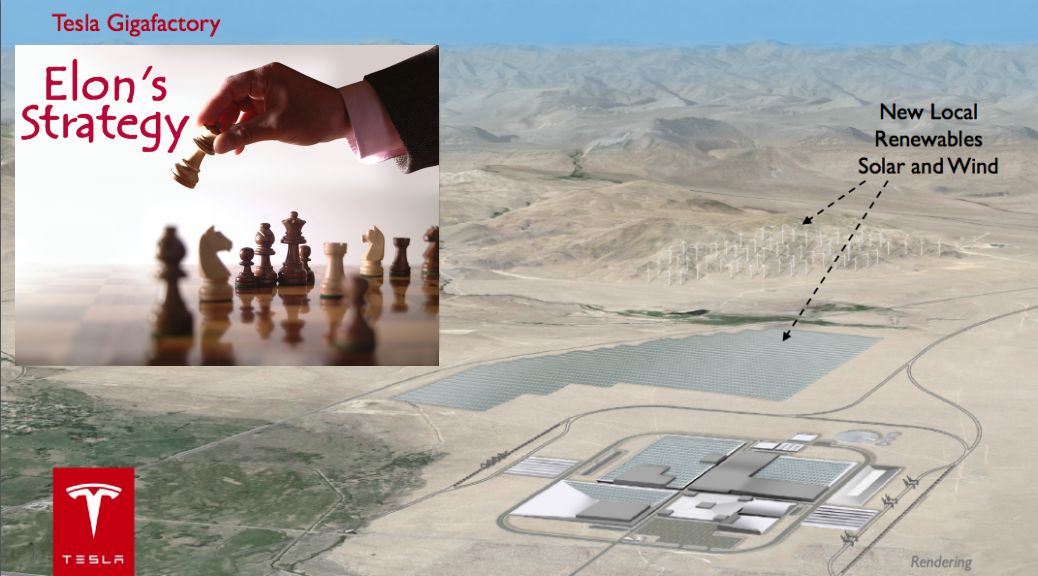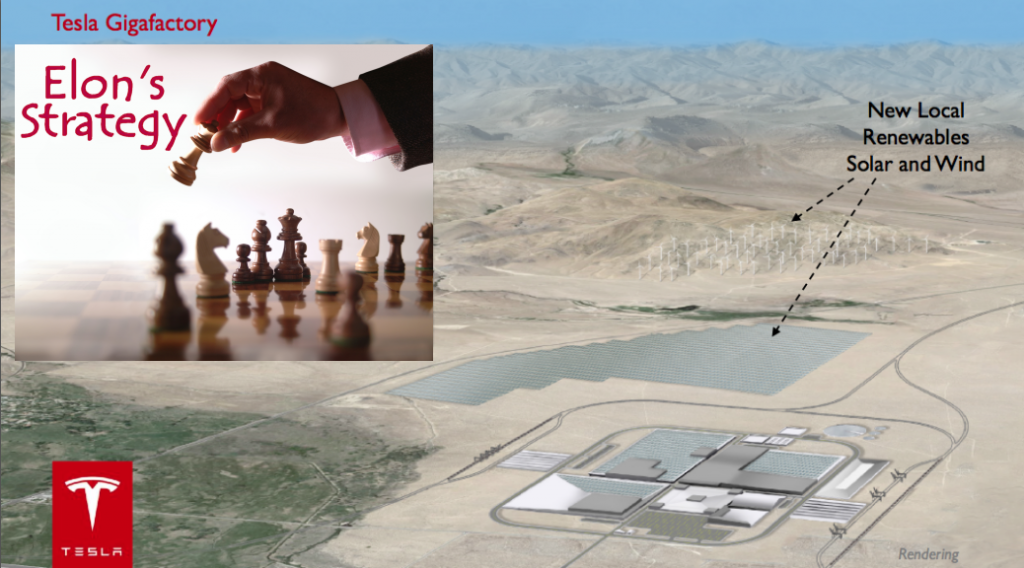News
The strategy behind the state selection of the Tesla Gigafactory

By now, everyone who has any interest at all in Tesla Motors has heard about their plans for a Gigafactory. Since the plan was introduced in February, the discussion groups and forums have been filled with thoughts on the implications of the huge battery making installation. Four potential sites were named: New Mexico, Nevada, Arizona and Texas.
Speculation about how this would change things became rampant. Nicolas Zart asked how it would affect Tesla’s long-standing relationship with Panasonic, who provides the batteries being used in the Model S and that will likely be used in the upcoming Model X. Yet a more persistent question in the peanut gallery has been why Tesla would choose the states it mentioned as candidates for the factory.
To be straightforward, there was a lot of strategic thinking that went behind the choice of the four states mentioned, and there’s a good reason that a couple of those states, deemed as “Tesla-unfriendly,” are on the list.
Logistics
The states chosen are all within a specific logistical area. They’re warm weather states, have little seismic activity, are within easily-accessed and well-established transportation corridors (trains, highways, etc.), have low-cost land available, and have a surplus of most energy types.
This means that transport of materials and finished products to and from each of these locations is relatively easy and requires minimal work to customize. All of them are in sunny locations (a primary requirement for a solar farm as large as Tesla proposes) and they all have access to low-cost energy at surplus should the wind and solar plans take longer to establish or not perform as expected.
Costs and Baskets of Eggs
Each of the four states named also have highly conducive political environments for business. California, love it or hate it, is one of the worst places in the nation to attempt to start a manufacturing business in terms of bureaucracy, costs, and red tape. Choosing California would also mean Tesla would be putting all of their eggs into one basket, as it were, geographically and politically. This would directly affect our next point. We’ll discuss that in a moment.
All four of the states listed have low or no corporate income tax, have relatively low property taxes (even for industrial use), and are about as business-friendly as a state’s government can be without giving away the farm. Nevada and Arizona also have corporate-friendly incorporation laws, should Tesla need to use them.
Leverage
Now for the real meat of it. Tesla has already leveraged California for about everything it can in terms of concessions and breaks. California would likely be willing to do a lot to help Musk get his Gigafactory built, but it’s just as likely that the other candidates would do just as much on top of their already-friendly atmosphere, industry-wise.
Further, two of these states (do we need to name them?) have been less than friendly to Tesla during the dealership vs direct sales battles. Dangle the “create a green factory and employ a lot of your citizens” carrot, though, and suddenly the discussion might begin to change a little.
You don’t have to be Richard Nixon to see that the prospect of one of the world’s largest automotive battery factories being located in your state will have a hundred benefits to every loss you might politically incur for turning your back on your friends at the auto dealer’s association. Especially if you’re a governor with hopes of getting into the White House (ahemRickPerryahem). It’s things like the Gigafactory that can build legacies for those with the savvy to utilize the PR potential.
Strategically Speaking
Putting it together, the strategy behind the Gigafactory’s geographic location is very astute. Musk and Co gain more by naming enemies in their list of potentials than they would going the relatively safe route of staying in their west coast comfort zone.

Elon Musk
Elon Musk confirms xAI’s purchase of five 380 MW natural gas turbines
The deal, which was confirmed by Musk on X, highlights xAI’s effort to aggressively scale its operations.

xAI, Elon Musk’s artificial intelligence startup, has purchased five additional 380 MW natural gas turbines from South Korea’s Doosan Enerbility to power its growing supercomputer clusters.
The deal, which was confirmed by Musk on X, highlights xAI’s effort to aggressively scale its operations.
xAI’s turbine deal details
News of xAI’s new turbines was shared on social media platform X, with user @SemiAnalysis_ stating that the turbines were produced by South Korea’s Doosan Enerbility. As noted in an Asian Business Daily report, Doosan Enerbility announced last October that it signed a contract to supply two 380 MW gas turbines for a major U.S. tech company. Doosan later noted in December that it secured an order for three more 380 MW gas turbines.
As per the X user, the gas turbines would power an additional 600,000+ GB200 NVL72 equivalent size cluster. This should make xAI’s facilities among the largest in the world. In a reply, Elon Musk confirmed that xAI did purchase the turbines. “True,” Musk wrote in a post on X.
xAI’s ambitions
Recent reports have indicated that xAI closed an upsized $20 billion Series E funding round, exceeding the initial $15 billion target to fuel rapid infrastructure scaling and AI product development. The funding, as per the AI startup, “will accelerate our world-leading infrastructure buildout, enable the rapid development and deployment of transformative AI products.”
The company also teased the rollout of its upcoming frontier AI model. “Looking ahead, Grok 5 is currently in training, and we are focused on launching innovative new consumer and enterprise products that harness the power of Grok, Colossus, and 𝕏 to transform how we live, work, and play,” xAI wrote in a post on its website.
Elon Musk
Elon Musk’s xAI closes upsized $20B Series E funding round
xAI announced the investment round in a post on its official website.

xAI has closed an upsized $20 billion Series E funding round, exceeding the initial $15 billion target to fuel rapid infrastructure scaling and AI product development.
xAI announced the investment round in a post on its official website.
A $20 billion Series E round
As noted by the artificial intelligence startup in its post, the Series E funding round attracted a diverse group of investors, including Valor Equity Partners, Stepstone Group, Fidelity Management & Research Company, Qatar Investment Authority, MGX, and Baron Capital Group, among others.
Strategic partners NVIDIA and Cisco Investments also continued support for building the world’s largest GPU clusters.
As xAI stated, “This financing will accelerate our world-leading infrastructure buildout, enable the rapid development and deployment of transformative AI products reaching billions of users, and fuel groundbreaking research advancing xAI’s core mission: Understanding the Universe.”
xAI’s core mission
Th Series E funding builds on xAI’s previous rounds, powering Grok advancements and massive compute expansions like the Memphis supercluster. The upsized demand reflects growing recognition of xAI’s potential in frontier AI.
xAI also highlighted several of its breakthroughs in 2025, from the buildout of Colossus I and II, which ended with over 1 million H100 GPU equivalents, and the rollout of the Grok 4 Series, Grok Voice, and Grok Imagine, among others. The company also confirmed that work is already underway to train the flagship large language model’s next iteration, Grok 5.
“Looking ahead, Grok 5 is currently in training, and we are focused on launching innovative new consumer and enterprise products that harness the power of Grok, Colossus, and 𝕏 to transform how we live, work, and play,” xAI wrote.
Investor's Corner
Tesla gets price target bump, citing growing lead in self-driving

Tesla (NASDAQ: TSLA) stock received a price target update from Pierre Ferragu of Wall Street firm New Street Research, citing the company’s growing lead in self-driving and autonomy.
On Tuesday, Ferragu bumped his price target from $520 to $600, stating that the consensus from the Consumer Electronics Show in Las Vegas was that Tesla’s lead in autonomy has been sustained, is growing, and sits at a multiple-year lead over its competitors.
CES 2026 validates Tesla’s FSD strategy, but there’s a big lag for rivals: analyst
“The signal from Vegas is loud and clear,” the analyst writes. “The industry isn’t catching up to Tesla; it is actively validating Tesla’s strategy…just with a 12-year lag.”
The note shows that the company’s prowess in vehicle autonomy is being solidified by lagging competitors that claim to have the best method. The only problem is that Tesla’s Vision-based approach, which it adopted back in 2022 with the Model 3 and Model Y initially, has been proven to be more effective than competitors’ approach, which utilizes other technology, such as LiDAR and sensors.
Currently, Tesla shares are sitting at around $433, as the company’s stock price closed at $432.96 on Tuesday afternoon.
Ferragu’s consensus on Tesla shares echoes that of other Wall Street analysts who are bullish on the company’s stock and position within the AI, autonomy, and robotics sector.
Dan Ives of Wedbush wrote in a note in mid-December that he anticipates Tesla having a massive 2026, and could reach a $3 trillion valuation this year, especially with the “AI chapter” taking hold of the narrative at the company.
Ives also said that the big step in the right direction for Tesla will be initiating production of the Cybercab, as well as expanding on the Robotaxi program through the next 12 months:
“…as full-scale volume production begins with the autonomous and robotics roadmap…The company has started to test the all-important Cybercab in Austin over the past few weeks, which is an incremental step towards launching in 2026 with important volume production of Cybercabs starting in April/May, which remains the golden goose in unlocking TSLA’s AI valuation.”
Tesla analyst breaks down delivery report: ‘A step in the right direction’
Tesla has transitioned from an automaker to a full-fledged AI company, and its Robotaxi and Cybercab programs, fueled by the Full Self-Driving suite, are leading the charge moving forward. In 2026, there are major goals the company has outlined. The first is removing Safety Drivers from vehicles in Austin, Texas, one of the areas where it operates a ride-hailing service within the U.S.
Ultimately, Tesla will aim to launch a Level 5 autonomy suite to the public in the coming years.









